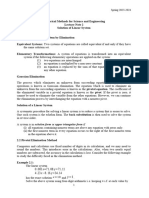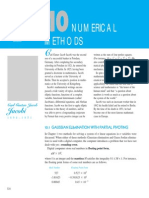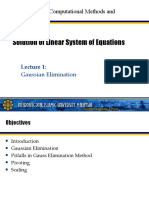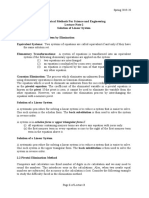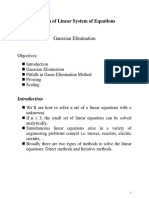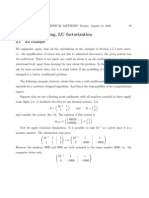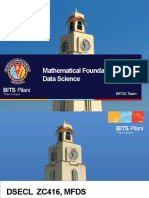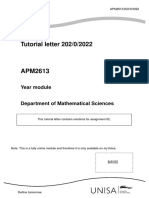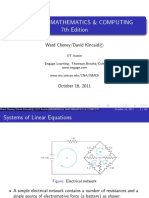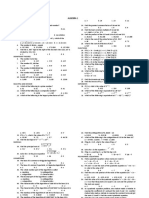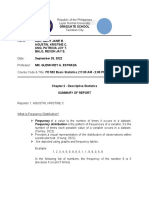0% found this document useful (0 votes)
130 views3 pagesIn-Class Problems: Introduction To Scientific Computation
This document is a problem sheet for a lecture on direct methods for solving linear systems. It provides 8 problems related to Gaussian elimination and pivoting strategies for solving systems of linear equations. The problems involve performing Gaussian elimination using exact arithmetic as well as finite-digit arithmetic with rounding or chopping. They also involve comparing different pivoting strategies and analyzing the number of comparisons required for each strategy. Readings from a textbook on scientific computation are provided as additional resources.
Uploaded by
JapopCopyright
© © All Rights Reserved
We take content rights seriously. If you suspect this is your content, claim it here.
Available Formats
Download as PDF, TXT or read online on Scribd
0% found this document useful (0 votes)
130 views3 pagesIn-Class Problems: Introduction To Scientific Computation
This document is a problem sheet for a lecture on direct methods for solving linear systems. It provides 8 problems related to Gaussian elimination and pivoting strategies for solving systems of linear equations. The problems involve performing Gaussian elimination using exact arithmetic as well as finite-digit arithmetic with rounding or chopping. They also involve comparing different pivoting strategies and analyzing the number of comparisons required for each strategy. Readings from a textbook on scientific computation are provided as additional resources.
Uploaded by
JapopCopyright
© © All Rights Reserved
We take content rights seriously. If you suspect this is your content, claim it here.
Available Formats
Download as PDF, TXT or read online on Scribd
/ 3








